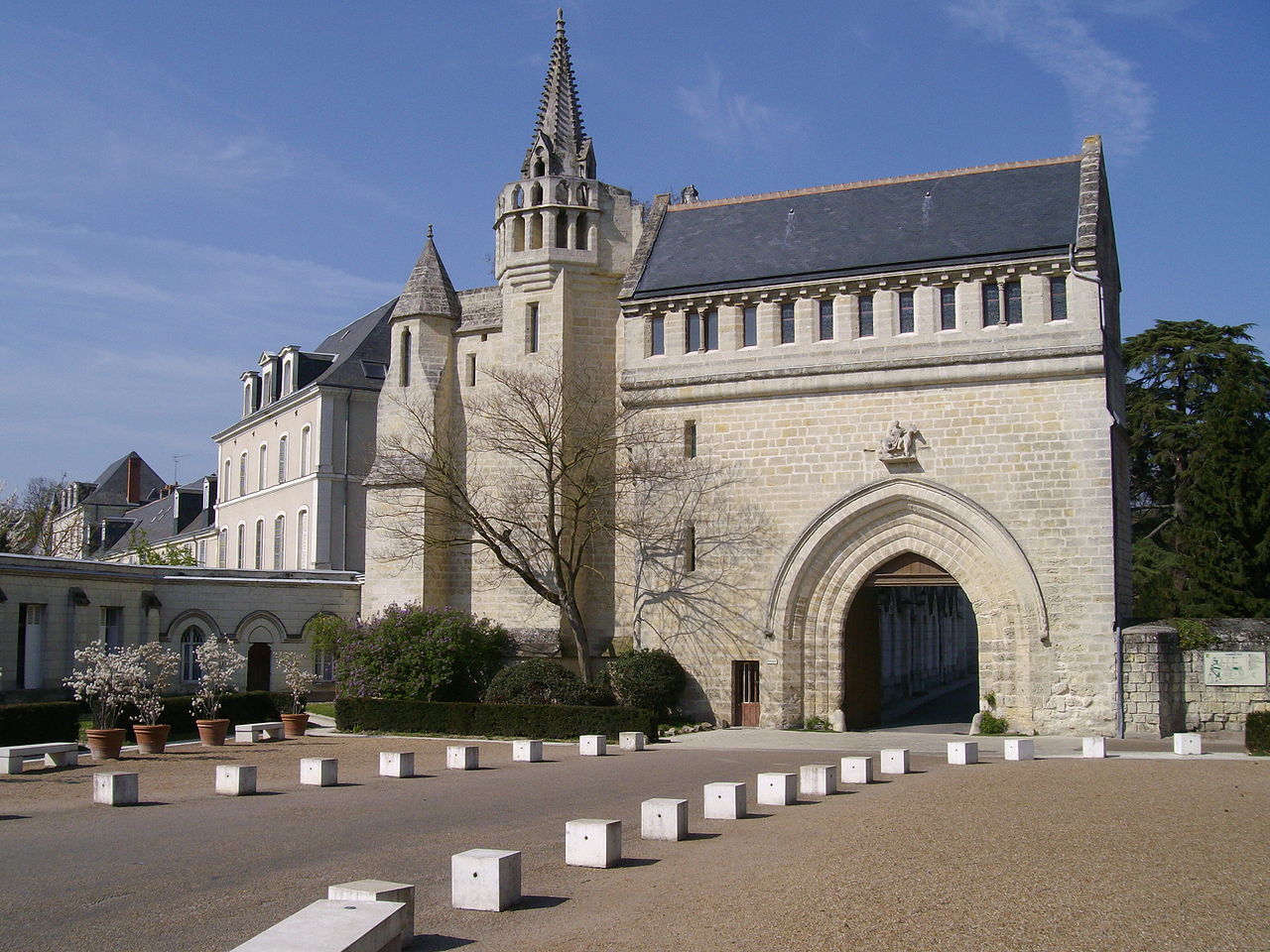Après son élection à l’évêché de Tours, Saint Martin fonde l’ermitage de Marmoutier au bord de la Loire dans un site particulièrement remarquable à l’est de la ville,: il est enclavé entre le coteau et un méandre de la Loire et Sulpice Sévère qui fut le disciple et biographe de Saint Martin met l’accent sur l’isolement et la difficulté d’accès. Pourtant le lieu fut occupé dés le Ier siècle de notre ère. La falaise offre un abri aux frères qui suivent Martin dans ce ermitage qui devient la première abbaye d’occident. Dès le 6e siècle, le grand développement de l’ermitage est attesté par son nom même (Majus monasterium).
Les sources écrites sont très rares entre la fin du VIe siècle et la fin du Xe siècle mais l’archéologie prouve la continuité d’utilisation du site avant que celui ci n’entre dans sa période de très grande expansion à partir du Xe siècle: Marmoutier restauré sous l’influence de Cluny connut à nouveau un grand rayonnement d’abord sous l’impulsion des comtes d’Anjou puis des rois de France
Le monastère épiscopal devient une prestigieuse abbaye dont le rayonnement est considérable (200 prieurés en dépendent à la fin du 12e siècle).l’âge d’or de l’abbaye s’achève au XIIIe siècle et le déclin est permanent. . Le monastère a été restauré et entretenu jusqu’en 1789. La démolition commence au 19e siècle, l’abbaye ne subsiste plus qu’à l’état de vestiges seuls sont conservés le portail de la Crosse, la maison abbatiale, la maison du prieur, la tour des Cloches, le porche de la sacristie, l’enceinte et deux portails. La propriété est achetée en 1847 par la congrégation du Sacré-Cœur qui y installe un pensionnat qui existe toujours.
L’abbaye est entourée par une enceinte établie à la fois dans la vallée et sur le plateau de Rougemont. Au pied du coteau calcaire se dressent l’église et les bâtiments monastiques : à l’ouest l’hôtellerie, à l’est l’infirmerie, au sud les dépendances et un cimetière associé à l’église Saint-Nicolas, située hors les murs, sur les bords de la Loire. Au nord, sur le coteau, est construit au XIVe siècle le logis de l’abbé. L’archéologie permet l’identification de trois églises abbatiales successives. Chacune dispose d’une nef à trois vaisseaux. L’église romane et l’église gothique présentent le plan caractéristique des églises de pèlerinage dotées d’un déambulatoire.
. L’abbatiale et la plupart des bâtiments monastiques ont été détruits après la Révolution. L’enceinte est au contraire presque complète Le site fait l’objet de nombreuses fouilles renouvelées depuis une dizaine d’années.
Site classé au patrimoine de l’inventaire
La tour des cloches
After his election to the bishopric of Tours, Saint Martin founded the hermitage of Marmoutier on the banks of the Loire in a particularly remarkable site to the east of the city: it is enclosed between the hillside and a meander of the Loire and Sulpice Severus, who was Saint Martin’s disciple and biographer, emphasises the isolation and difficulty of access. However, the place was occupied as early as the 1st century AD. The cliff offered shelter to the brothers who followed Martin to this hermitage, which became the first abbey in the West. As early as the 6th century, the great development of the hermitage is attested by its very name (Majus monasterium).
Written sources are very scarce between the end of the 6th century and the end of the 10th century, but archaeology proves the continuity of use of the site before it entered its period of great expansion from the 10th century onwards: Marmoutier, restored under the influence of Cluny, once again experienced great influence, first under the impetus of the Counts of Anjou and then of the kings of France
The episcopal monastery became a prestigious abbey whose influence was considerable (200 priories depended on it at the end of the 12th century). The golden age of the abbey ended in the 13th century and the decline was permanent. The monastery was restored and maintained until 1789. Demolition began in the 19th century, and the abbey was left in a state of ruin, with only the Crosse portal, the abbey house, the prior’s house, the Bell Tower, the sacristy porch, the enclosure and two portals remaining. The property was bought in 1847 by the Congregation of the Sacred Heart, which set up a boarding school that still exists today.
The abbey is surrounded by an enclosure established both in the valley and on the Rougemont plateau. At the foot of the limestone hillside stood the church and the monastic buildings: to the west was the hostelry, to the east the infirmary, to the south the outbuildings and a cemetery associated with the church of Saint-Nicolas, located outside the walls, on the banks of the Loire. To the north, on the hillside, the abbot’s residence was built in the 14th century. Archaeology has identified three successive abbey churches. Each one has a three-vessel nave. The Romanesque and Gothic churches have the characteristic layout of pilgrimage churches with an ambulatory.
. The abbey church and most of the monastic buildings were destroyed after the Revolution. The site has been the subject of numerous excavations over the last ten years.
Site listed in the heritage inventory

 "/>
"/>

